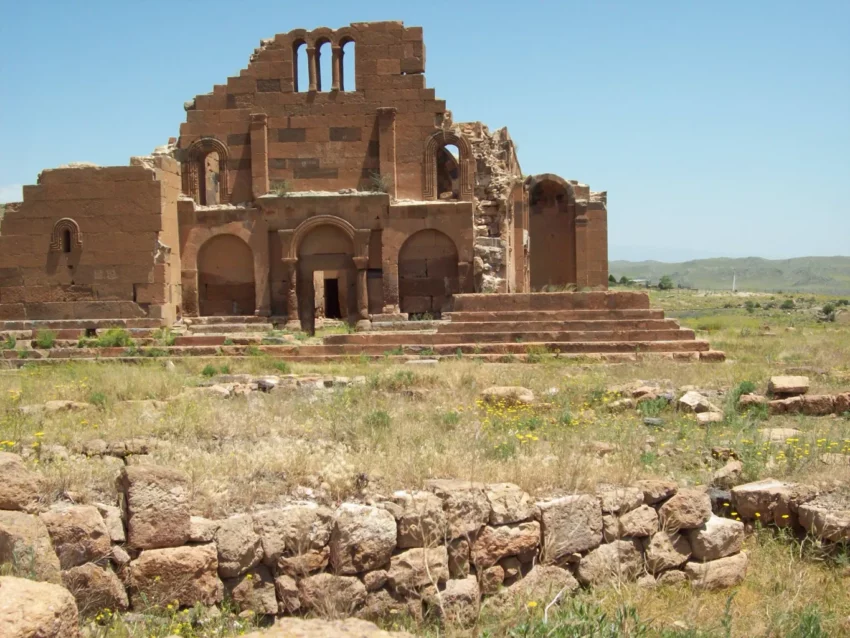Introduction to the Basilica of Yereruyk
The Basilica of Yereruyk is a significant archaeological and architectural site located near the village of Anipemza in the Shirak Province of Armenia. Positioned on a plateau near the Akhurian River, which marks the border with Turkey, the basilica is approximately 5 km southeast of the ancient city of Ani. This site is a paramount example of early Christian architecture in Armenia, reflecting the historical and cultural developments of the region during the early medieval period.
Get your dose of History via Email
Architectural Significance and Construction Phases
The construction of Yereruyk Basilica spans several centuries, with its inception in the 4th century AD, a hiatus in the 5th century, and completion in the 6th century. The basilica is a testament to the Paleo-Christian architectural style prevalent during this era. Despite the absence of direct historical references to the basilica, recent scholarly studies involving stratigraphic tests and analysis of sculptural and epigraphic decorations have provided insights into its construction phases. These studies also compare the architectural features of Yereruyk with contemporaneous churches in Syria, further highlighting its significance in the study of early Christian architecture.
UNESCO Recognition
In recognition of its historical and cultural significance, the Basilica of Yereruyk was added to the UNESCO World Heritage Tentative List on August 25, 1995, under the Cultural category. This inclusion underscores the global importance of the basilica as one of the earliest surviving Christian monuments in Armenia.
Etymology and Historical Context
The name ‘Yereruyk’ translates to ‘quivering’ in Armenian, a reference to the basilica’s architectural design, which features a structure supported by six columns, creating a visual effect of quivering when viewed from a distance. The basilica’s design and construction reflect the early development of the Armenian basilica style, characterized by its use of pillars and extensive surrounding structures, including thick walls, underground rooms, and a water reservoir, indicating that Yereruyk was the center of a well-developed residential community.
Architectural Description
Yereruyk Basilica is structured with three aisles and thick lateral walls, making it one of the largest Armenian churches from this period. The basilica originally featured wooden trusses covering it and included arcades on the north, west, and south sides. Notably, the basilica shares similarities with Syrian basilicas, particularly in the architectural layout and sculptural decorations. An important feature of the basilica is the Greek inscription at the east end of the south facade, which parallels inscriptions found in Syrian churches from the late 5th century.
The basilica also functioned as a martyrial sanctuary, as indicated by an inscription on a pilaster at the northeast corner of the apse, dedicated to Saint John the Baptist and Saint Stephen. The sculptural decorations of the basilica, particularly the use of the Maltese cross and other symbolic motifs, highlight the religious and cultural significance of the site.
Conclusion
The Basilica of Yereruyk stands as a monumental testament to the rich architectural and religious history of early medieval Armenia. Its inclusion on the UNESCO World Heritage Tentative List emphasizes its importance as a cultural heritage site, offering invaluable insights into the early Christian period of the region. As archaeological studies continue, Yereruyk will undoubtedly contribute further to our understanding of historical architectural practices and religious life in ancient Armenia.
Sources:

